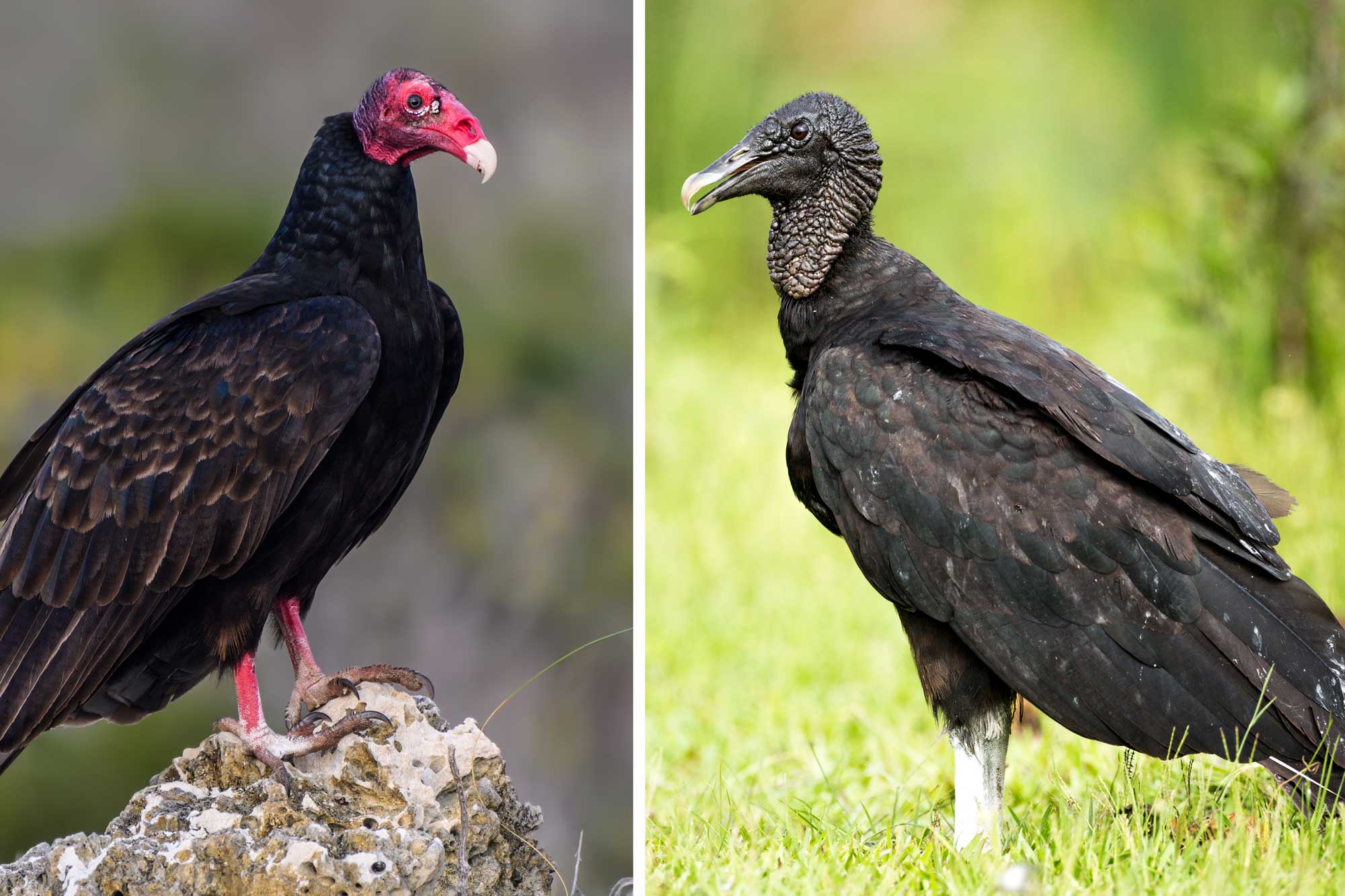What's the difference?: turkey vulture vs. black vulture

Vultures aren't winning any beauty contests in the animal kingdom, but their look is actually essential to their ecosystem role. These not-so-beautiful birds do a great service to the environment by eating dead animals almost exclusively, and a head free of feathers means there's nothing for those bits of flesh to get stuck in.
Locally, it's almost always just the turkey vulture feasting on dead things to keep the environment clean, but in many areas of North America and South America there are two vultures in town — turkey vultures and the similar-looking black vultures. Even southern Illinois is part of the black vulture's range, and they do occasionally make their way farther north.
Turkey vultures live across all of the United States, Mexico and almost all of South America as well as the southernmost portion of Canada, but they are migratory, leaving the northern and northwestern parts of their range each winter, according to the Cornell Lab of Ornithology. Black vultures are not migratory, and their range is much smaller, living across the southeastern part of the United States as well as most of Mexico and South America.
Black vultures are not as common as turkey vultures in the United States, and since their range does not typically include northern Illinois, when we see a vulture here, it is almost always a turkey vulture.
The most obvious difference between these two birds is their heads. Both have completely featherless heads, which prevents them from getting too dirty or contaminated when feasting on carcasses. However, a turkey vulture's head is red, while a black vulture's head is black, according to the National Park Service. And while a turkey vulture's bill is white in color, a black vulture's is black, matching the rest of its head.
While their head coloring can be the most distinct and obvious way to tell these two vultures apart, juvenile birds can cause some confusion. Juvenile turkey vultures look much more similar to black vultures, with dark-colored heads and bills, the Cornell Lab reports. Juvenile black vultures look similar to their adult counterparts.
Although the birds' feathers may look to be the same color when seen in flight, they are actually different colors. When you get a closer look, you can see that black vultures have black feathers, while a turkey vulture's are dark brown in color, according to the Cornell Lab of Ornithology.
If you can't see their coloring while they are flying overhead, check out their wings. In flight, the vultures look quite similar, but look for patches of white feathers on the underside of their wings to tell which vulture you are seeing. Both have white patches, but a turkey vulture's run the length of their wings and are also on their tails, according to the National Park Service. Black vultures only have white feathers at the tips of their wings.
On the ground, the birds appear similar in size, although turkey vultures are a bit larger. They stand between 25 inches and 32 inches tall, while black vultures are generally between 23 inches and 27 inches tall, the Cornell Lab reports. A turkey vulture's wingspan can be between about 5 1/2 feet and 6 feet, while a black vulture's is between 4 1/2 feet and 5 feet.
Both vultures feast almost exclusively on carrion, although black vultures will sometimes kill prey. Black vultures have an excellent sense of vision, which helps them see a potential meal from above. Turkey vultures have a better sense of smell and are able to more easily sniff out a carcass, the Cornell Lab reports. Black vultures will often follow turkey vultures to their find. When competing for a food source, turkey vultures will win out because they are slightly bigger, but black vultures often flock together and can push turkey vultures away.
